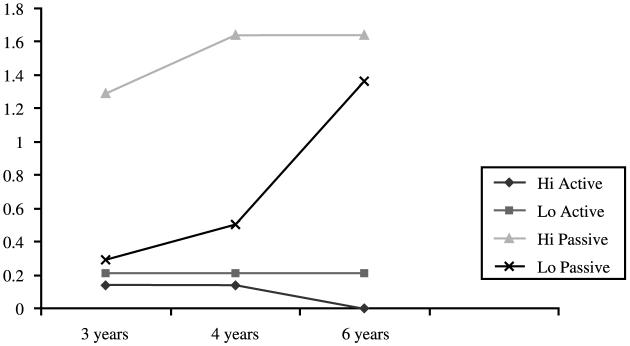Abstract
The current studies used a priming methodology to assess the abstractness of children’s early syntactic constructions. In the main study, 3-, 4- and 6-year-old children were asked to describe a prime picture by repeating either an active or a passive sentence, and then they were left to their own devices to describe a target picture. For half the children at each age, the prime sentences they repeated had high lexical overlap with the sentence they were likely to produce for the target, whereas for the other half there was very low lexical overlap between prime and target. The main result was that 6-year-old children showed both lexical and structural priming for both the active transitive and passive constructions, whereas 3- and 4-year-old children showed lexical priming only. This pattern of results would seem to indicate that 6-year-old children have relatively abstract representations of these constructions, whereas 3- and 4-year-old children have as an integral part of their representations certain specific lexical items, especially pronouns and some grammatical morphemes. In a second study it was found that children did not need to repeat the prime out loud in order to be primed - suggesting that the priming effect observed concerns not just peripheral production mechanisms but underlying linguistic representations common to comprehension and production. These results support the view that young children develop abstract linguistic representations gradually during the preschool years.
Introduction
A central question in the study of children’s syntactic development is the question of abstractness. That is, when children produce multi-word utterances, are they doing so on the basis of concrete linguistic items such as particular words and phrases? Or are they doing so on the basis of abstract linguistic categories and constructions? Or are they doing so on the basis of some mixture of concrete and abstract linguistic representations?
The analysis of children’s spontaneous speech is of only limited help in answering this question. The reason is that abstractness is inferred from creativity (productivity), and so when a child produces a canonical adult-like utterance there is no way of knowing whether she produced it directly from some string of words and phrases previously heard and learned, or whether she produced it creatively from abstract linguistic representations. The one phenomenon of children’s spontaneous speech that allows for inferences about productivity and abstractness is overgeneralization errors. In the domain of syntactic development, evidence from overgeneralization - for example, using an intransitive verb transitively (e.g. ‘She giggled me’) - have been systematically studied and reported for only a few children. Pinker (1989, pp. 17-26) compiled such examples from Bowerman’s (1982, 1988) two children and a few others, and found that it was only after 3 years of age that they occurred with any frequency, with almost none before 2.5 years.
The major avenue for exploring children’s productivity has been experiments - in both comprehension and production - in which the language children hear is carefully controlled. In terms of comprehension, from early in development young children show the ability to act out appropriately, for example, English transitive utterances, when they use known verbs (e.g. Roberts, 1983) - presumably because they have learned from experience that those verbs are used in those general ways (although perhaps not with the specific nouns used in the experiment). But with unknown verbs, children under 3 years of age are mostly unable to act out an English transitive utterance appropriately. That is, when told to ‘Make X dack Y’ or ‘Show me: X is dacking Y’ they are equally likely to make either X or Y the agent of the action (see Akhtar & Tomasello, 1997, for two different methodological variants of this procedure).
Other researchers studying comprehension have used the preferential looking methodology and found that some 2-year-olds seem to understand some aspects of an abstract transitive construction in English. For example, Naigles (1990) found that when they hear transitive utterances, children from 2;1 prefer to look at one participants doing something to another (causative meaning) rather than two participants carrying out synchronous independent activities. What this study does not show, however, is that 2-year-olds can connect the pre-verbal position with the actor (or subject) and the post-verbal position with the undergoer (or object) in a transitive utterance - which would be required for a full-blown representation of the transitive construction. The only preferential looking study that attempted to examine this knowledge is by Fisher (2000). However, the sentences she gave children (1;9 and 2;2) had prepositional phrases that provided additional information (e.g. The duck is gorping the bunny up and down), which children could use instead of the formal syntactic marking. (See also Fisher, 1996, 2002, for a different methodology that also used sentences with additional information from prepositional phrases.) The question of whether young 2-year-olds can use canonical English word order to identify actors and undergoers with novel verbs in the preferential looking paradigm is thus at this point still an open question.
In production experiments using nonce verbs the focal age is once again 2 to 3 years. The general finding is that 2-year-old children’s early productivity with syntactic constructions is highly limited. For example, Tomasello and Brooks (1998) exposed 2- to 3-year-old children to a novel verb used to refer to a highly transitive and novel action in which an agent was doing something to a patient. In the key condition the novel verb was used in an intransitive sentence frame such as The sock is tamming (to refer to a situation in which, for example, a bear was doing something that caused a sock to ‘tam’ - similar to the verb roll or spin). Then, with novel characters performing the target action, the adult asked children the question: What is the doggie doing? (when the dog was causing some new character to tam). Agent questions of this type encourage a transitive reply such as He’s tamming the car - which would be creative since the child has heard this verb only in an intransitive sentence frame. The outcome was that very few children produced a full transitive utterance with the novel verb. As a control, children also heard another novel verb introduced in a transitive sentence frame, and in this case virtually all of them produced a full transitive utterance - demonstrating that they can use novel verbs in the transitive construction when they have heard them used in that way. Moreover, 4- to 5-year-old children are quite good at using novel verbs in transitive utterances creatively, demonstrating that once they have indeed acquired more abstract linguistic skills children are perfectly competent in these tasks (Pinker, Lebaux & Frost, 1987; Maratsos, Gudeman, Gerard-Ngo & DeHart, 1987; see Tomasello, 2000, for a review).
In another nonce verb production mehtodology, Akhtar (1999) introduced 2.5- to 4.5-year-old children to a novel event and said such thing as The bird the bus meeked. When subsequently given new toys and encouraged to talk about the new event, they quite often repeated the pattern and said such things as The bear the cow meeked - only consistently correcting to canonical English word order at 4.5 years of age. This behavior is consistent with the view that when 2- to 3-year-olds are learning about meeking they are just learning about meeking; they do not assimilate this newly learned verb to some more abstract, verb-general linguistic category or construction that would license a canonical English transitive utterance. It should be noted, however, that the 2-year-old children in the Akhtar (1999) study were better at repeating sentences with nonce verbs if they had heard these verbs used in SVO order than if they had heard them used in the ungrammatical orders SOV or VSO - indicating some sensitivity to conventional usage. Abbot-Smith, Lieven and Tomasello (2001) recently tested younger children with the intransitive construction in a similar paradigm, and and found a similar effect. Although children at 2;4 were much more likely to follow the adult in using ungrammatical word orders than to correct to grammatical word order - even more strongly than the 2;8 children in Akhtar’s study - they also reproduced canonical orders more readily than noncanonical orders, perhaps evidencing some nascent knowledge of an abstract transitive construction.
Overall, the results from these different methodologies converge on the conclusion that from 2 to 3 years of age young English-speaking children are still in the process of building up their abstract, verb-general constructions, such as the transitive construction - with the details still unknown at this point. One issue, however, is that all of these experiments use, for obvious reasons, nonce verbs, and it may be difficult for young children to learn and use a new verb productively in just one or a few experimental sessions. Another issue for the production experiments in particular is that children are exposed to the novel verb in one construction multiple times - so that they can learn it - before they are asked to demonstrate productivity with that verb in another construction. So, in a sense, the new verb is primed in one construction multiple times before the child is encouraged to used it in another construction.
In the current study we used a new methodology - that is, new in the study of child language - for assessing the abstractness of children’s syntactic representations. Our strategy was to test for priming effects directly. In the adult psycholinguistics literature, Bock (1986) and others have found that sentences of the same syntactic form prime one another even when these have virtually no specific words or morphemes in common - so-called structural priming. For example, subjects who first described one picture with a ditransitive (rather than a prepositional dative) construction, were more likely to describe a new picture with a ditransitive (rather than a prepositional dative) construction. The major theoretical debate in the literature is whether indeed the observed effect is due to purely structural (abstract syntactic) priming or whether some of the effects are due to some kinds of lexical priming as well; for example, the magnitude of the priming effect is greater when primes and target share the same verbs than when the verbs differ (Pickering & Branigan, 1998).
To address this issue directly, in the current study we primed English-speaking children by having them produce initially either active or passive sentences, in some cases with high lexical overlap between these primes and the sentence they were encouraged to produce subsequently (i.e. the prime used some pronouns and grammatical morphemes that the child could use in her target utterance even though different objects and actions were involved) and in some cases with very low lexical overlap (i.e. the prime used only nouns, which the child could not use in her target utterance since different objects were involved). In some ways, this method could be considered the most direct test yet of early syntactic representations, since successful priming in the high lexical overlap condition would suggest that children’s linguistic knowledge is represented in terms of specific lexical items, whereas priming in the low lexical overlap condition would suggest that their linguistic knowledge is represented more abstractly. Although all experimental procedures have their more-or-less irrelevant task demands, this procedure is different from previous procedures in not using nonce verbs - it uses only English verbs already familiar to the children - and in not priming children ahead of time to use any verbs in non-target constructions.
An important secondary issue concerns whether the priming of linguistic productions has to do with underlying linguistic representations or with more peripheral production mechanisms only. In studies with adults, Pickering, Branigan and Cleland (2000) have provided evidence that the effect is on linguistic representations directly (contra Bock’s procedural account, 1986, 1990; Bock & Loebell, 1990). The basic finding is that adults can be structurally primed just by hearing certain kinds of sentences, even when they do not first produce similar sentences themselves (see also Chang, Dell, Bock & Griffin, 2000, for a connectionist simulation and Potter & Lombardi, 1998, for priming from perception without production in verbatim recall). In a second study, therefore, we also attempted to prime children by simply exposing them to certain types of utterances and seeing if this affected their subsequent linguistic productions.
Study 1
Method
Participants
Eighty-four monolingual English-speaking children participated, split equally between three age groups. The 3- and 4-year-olds groups were recruited from nurseries in the Manchester area, UK, and the 6-year-olds group was recruited from two schools in the Wirral area, UK. The 28 3-year-olds ranged in age from 2;11 to 3;7 (M 3;2) with 16 males and 12 females. The 28 4-year-olds ranged in age from 3;10 to 4;6 (M 4;2) with 10 males and 18 females. The 28 6-year-olds ranged in age from 6;1 to 7;1 (M 6;2) with 16 males and 12 females. Three 3-year-olds did not comply with the procedure; six 3-year-olds and five 4-year-olds were unavailable for session two. These children were therefore replaced.
Materials and design
Cartoon action scenes were created and presented in Microsoft Power Point 2000, on a Toshiba laptop computer. Three intransitive action-event cartoons were created for the warm-up, depicting an animal performing a self-perpetuated action (a bird flying, a cow running and a lion roaring). For the experiment, 10 action-event cartoons were created depicting two transitive actions performed by animated artefacts performing transitive actions, each lasting between 3 and 12 seconds (mean display time 9.3 seconds). Piloting of the stimuli with adults and 3-year-olds established that the actions and characters were recognizable and could be described with either active or passive sentences. There were five test items, each comprising a prime cartoon (with a spoken description; see below and its associated target cartoon. The five transitive verbs used in prime sentences were catch, dry, push, shoot, wrap, and the five transitive verbs depicted in target pictures were break, close, colour, cut, lock. The verbs chosen for primes all appeared in the eventive passive in naturalistic speech and those used as targets all appeared as alternations in naturalistic speech (that is cases in which a given verb is used with the same sense both as a passive participle and in some active construction within a reasonably short period) in naturalistic speech (Israel, Johnson & Brooks, 2000).
The study employed a mixed design. As a between-subjects variable, half of the children in each age group received High Overlap prime sentences, and the other half received Low Overlap prime sentences (see Table 1 for examples). As a within-subjects variable, all children experienced their five items in both Active (A) and Passive (P) form, blocked and presented on separate days in counterbalanced order across children in each group. Each block lasted around 10 minutes and was separated by at least one week from the other (M: 20.58 days; range: 5-59 days). Within blocks, items were presented in random order.
Table 1. Examples of active and passive prime sentences in high and low overlap, Study 1.
| Active example | Passive example | |
|---|---|---|
| High overlap | It is pushing it | It got pushed by it |
| Low overlap | The digger pushed the bricks | The bricks got pushed by the digger |
Procedure
Each child began by taking part in a warm-up session in which they talked to the experimenter about what the intransitive cartoon animals were called and practised producing and repeating sentences describing them. Then the child was presented with the five items of her first block. For each item E first showed the picture for the prime and described it with its appropriate sentence four times; the child was then told to repeat it. If the child did not comply by repeating the prime sentence, they were encouraged to do so by first repeating the sentence word by word and then fully on their own. If the child still did not produce the full sentence uninterrupted, they were shown the target anyway and the procedure progressed without alteration. Then the target picture was presented and E asked the child What’s happening? What happens? or What happened? During the experimental sessions E kept an on-line written record of child performance, and sessions were recorded on tape as well (a small number of taped sessions were lost through equipment failure or experimenter error).1
Scoring was done as follows. First, a child was given credit for repeating the prime sentence if no more than minor parts of the sentence were missing or changed (e.g. missing determiner) and if the prime construction type remained identifiable. All children repeated at least three out of five primes (i.e. the three 3-year-olds who did not were excluded; see Participants). Second, in terms of target responses, only responses following a repeated prime were included. Utterances were classified as Active, Passive or Other, with exact matches of prime sentences (word for word) noted. For the Passive construction, adjectival passives were excluded on the grounds that their status as true passives is equivocal (Israel et al., 2000). Only the first sentence-like utterance (i.e. excluding single word naming of characters) produced after exposure to each prime sentence was included in the analysis, with any subsequent utterances being disregarded. Reliability between two independent coders was 100% on a randomly selected 15% sample of the data.
Results
The children did not have difficulty producing descriptions for the transitive actions performed by animated artefacts. Most often, children did not question the pictures, and if they did ask how the objects moved they were usually satisfied with ‘I don’t know’ or ‘It must be magic’. They produced responses like ‘It got cracked by it’, ‘The keys is chopped’ (3-year-olds), ‘It got painted by it’, ‘The stick pushed the door’ (4-year-olds), and ‘The cake got cut’, ‘It’s pushing it’ or even ‘The log is shutting the door by itself’ (6-7-year-olds).
For purposes of statistical analysis, active and passive responses were analyzed separately, each in its own four-way ANOVA (Age: 3, 4, 6; Prime Type: Active, Passive; Overlap: High, Low; Order: Active First, Passive First).
Active responses
Active responses are displayed in Figure 1. The analysis of active responses revealed a significant main effect of age, F(1, 72)=4.18, p < .05 and prime type, F(1, 72) = 29.27, p < .01. Older children produced more active sentences than younger children overall, and all children produced more active sentences in response to active primes than to passive primes. Most importantly, there was a three-way interaction between prime type, age and overlap, F(1, 72) = 7.50, p < .01.
Figure 1. Active responses across age as a function of overlap and prime type, Study 1.
To investigate this interaction in more detail, three-way ANOVAs (Prime Type, Overlap, Order) were conducted separately for each age group. For each of the three age groups, there was a significant main effect of prime type (actives primed actives better than did passives); for the 3-year-olds F(1, 24) = 5.19, p < .05, for the 4-year-olds F(1, 24) = 9.19, p < .01, and for the 6-year-olds F(1, 24) = 15.16, p < .01. Most importantly, overlap interacted significantly with prime type for the 3-year-olds, F(1, 24) = 7.92, p < .01, and 4-year-ods, F(1, 24) = 7.72, p < .01, but there was no significant prime type by overlap interaction for the 6-year-olds. As can be seen in Figure 1, the children in the younger two age groups were only primed by active sentences in the high overlap condition, whereas the 6-year-olds were primed by active sentences of both types, regardless of overlap.
The order in which blocks were presented had an effect on active responses. Specifically, for the 4-year-olds and 6-year-olds there was a significant main effect of order (F(1, 24) = 5.86, p < .05 and F(1, 24) = 4.85, p < .05, respectively) such that more active responses were produced overall if active primes were given first - perhaps indicating some kind of carry-over effect when actives were primed first. For the 3-year-olds, order had no significant main effect, but it interacted significantly with prime type, F(1, 24) = 5.19, p < .05. Perhaps surprisingly, the magnitude of priming for actives was greater when active primes were given second. This is partly a trade off with passive responses. More passives were produced after a passive prime in the passives first condition for the 3-year-olds (see passives analysis), perhaps because children this young still have a tenuous hold on the passive copnstruction and so passive priming cannot work after active priming has already been given. Overall, then, active priming from session one seems to carry over to session two for the older two groups of children, whereas the younger children showed a more complex pattern - perhaps because of their fragile hold on the passive construction.
Passive responses
Passive responses are displayed in Figure 2. The analysis of passive responses revealed no significant main effect of age, perhaps due to the overall low numbers of responses. There was a main effect of prime type (more passive responses in response to passive than active primes), F(1, 72) = 44.05, p < .01 and of order, F(1,72) = 9.87, p < .01. Importantly, once again prime type interacted significantly with overlap, F(1, 72) = 7.69, p < .01. There was also a significant three-way interaction between age, overlap and order, F(2, 72) = 3.48, p < .05.
Figure 2. Passive responses across age as a function of overlap and prime type, Study 1.
Again, separate three-way ANOVAs were conducted for each age group to investigate these interactions more closely. There was a significant main effect of prime type in all three groups such that they produced more passive sentences in response to passive than to active primes; for the 3-year-olds F(1, 24) = 7.81, p < .01, for the 4-year-olds F(1, 24) = 13.34, p < .01, and for the 6-year-olds F(1, 24) = 23.40, p < .01. The age groups differed in that once again prime type interacted significantly with overlap for the 3-year-olds, F(1, 24) = 4.57, p < .05 and 4-year-olds, F(1, 24) = 4.26, p < .05, whereas there was no significant prime type by overlap interaction for the 6-year-olds. This pattern thus duplicates the main outlines of that for active responses in that the younger children (3- and 4-year-olds) were only primed by passive primes employing high overlap, whereas overlap did not matter for the older children (6-year-olds).
Order had no effect on the passive responses of the 4- and 6-year-olds, but once again order interacted with the main experimental conditions in complex ways for the 3-year-olds. For this youngest group of children there was a significant main effect of order, F(1, 24) = 6.42, p < .05 and of overlap, F(1, 24) = 6.42, p < .05 and a significant interaction between the two, F(1, 24) = 6.42, p < .05, as well as a significant interaction between order, overlap and prime type, F(1, 24) = 4.57, p < .05. More passives were produced in the passives first condition, but only when there was high overlap. Overall, passive priming for 3-year-olds is actually isolated to the high overlap, passive first condition.
Trial effects
We also looked to see if the effects of priming built up over the five trials within each condition. We did 12 comparisons, one for each condition comparing the number of children successfully primed on trials one and five (examining the production of actives following active primes and passives following passive primes). The main result was that more children produced a passive given a passive prime in the last trial than in the first trial in the high overlap condition for the older two age groups: for 4-year-olds, binomial probability = p < .02, and for 6-year-olds, binomial probability = p < .04. The 3-year-olds showed the same trend, but there were not enough correct responses for statistical reliability (four children were primed at trial five but not trial one, whereas no children showed the reverse pattern). There were no effects across trials on active responses, probably due to a ceiling effect (about 3/4 of the children produced an active when primed by an active on trial one). These findings are consistent with research indicating that priming may be considered a form of implicit learning, as the priming has a cumulative (learning) effect for that construction that children came into the experiment knowing least well.
Priming nouns and pronouns
Finally, we can also look to see if the kinds of NPs used in the prime sentences primed children to use certain kinds of NPs, that is, did the use of pronouns in the high overlap condition prime the use of pronouns, and did the use of nouns in the low overlap condition prime the use of nouns. Table 2 presents the results of this analysis. In the high overlap condition, children use pronouns a bit more than nouns at all ages; there were no age trends. But in the low overlap condition, there was a very strong age trend. Three-year-olds use nouns almost twice as much as pronouns, 4-year-olds use nouns more than 8 times as much as pronouns, and 6-year-olds use nouns more than 32 times more frequently than pronouns. It is important to note that this effect is not on children producing the exact nouns they heard in the prime sentence, but on their producing nouns in general - almost always different ones in the target sentence than they heard in the prime sentence. So this effect is a kind of structural priming as well, as it refers to a general category.
Table 2. Mean proportions of nouns and pronouns produced in target utterances across age groups and overlap conditions, Study 1.
| 3-year-olds | 4-year-olds | 6-year-olds | ||
|---|---|---|---|---|
| High overlap | Nouns | 1.02 | 1.26 | 1.46 |
| Pronouns | 2.18 | 2.09 | 2.30 | |
| Low overlap | Nouns | 1.79 | 3.13 | 3.67 |
| Pronouns | 0.99 | 0.38 | 0.12 |
Discussion
The results of this study are very clear. Six-year-old children showed both lexical and structural priming for two syntactic constructions, whereas 3- and 4-year-old children showed lexical priming only; they were not primed structurally. This was true for both the active transitive construction and for the passive construction. This pattern of results would seem to indicate that 6-year-old children have relatively abstract representations of these constructions, whereas 3- and 4-year-old children have as an integral part of their representations of these constructions certain specific lexical items, especially pronouns (and perhaps some grammatical morphemes). These findings are thus in line with those of Dodson and Tomasello (1998) and Childers and Tomasello (2001), who found that children learn and generalize the English transitive construction much more readily if it is presented with pronouns (rather than nouns only) in the argument slots.
It is perhaps a bit surprising that the 4-year-old children did not show any signs of structural priming. In the review of Tomasillo (2000), less than 50% of the 3-year-olds were productive with nonce verbs in the transitive construction, but more than 50% of the 4-year-olds were productive. But even in these studies pronouns may be playing some role in structuring the construction, since in all of them children produced transitive utterances with nonce verbs using pronouns or nouns, at their discretion. It is also interesting that the use of nouns in general in the low overlap condition seemed to prime the use of other nouns (a kind of categorical priming) very little in the 3-year-olds, a bit more in the 4-year-olds and much more in the 6-year-olds. This finding is generally in line with the main findings of this study, since it has been found in nonce word studies that children form categories of nouns before schematizing abstract verb-based constructions (Tomasillo et al., 1997). Finally, the finding that the effect of the priming built up over trials for the high overlap passive condition is very interesting in light of recent proposals relating priming to a kind of implicit learning (Bock & Griffin, 2000; Chang et al., 2000; Hartsuiker & Kolk, 1998; Hartsuiker, Kolk & Huiskamp, 1999). Some of the order effects, in which priming on the first session held over to the second session 1-3 weeks later, also point in this direction. (The current finding indicates that priming endures at least a week because this is the minimum gap involved between sessions one and two.) The relation between priming and learning in children’s construction learning is a question ripe for further research.
One worry in talking about linguistic representations is that syntactic priming effects may be due to mechanisms specific to syntactic production, not to linguistic representations per se. This is the procedural argument of Bock (e.g. 1986). But Pickering and colleagues have argued and presented some evidence from adults against this view and in support of the view that syntactic priming affects linguistic representations common to comprehension and production (Pickering, Branigan & Cleland, 2000; Pickering, Branigan, Cleland & Stewart, 2000). The second study was designed to address this question in the case of young children.
Study 2
The question of Study 2 was whether the priming observed in the first study is a feature of the production process only or whether it concerns linguistic representations more generally. To address this question, children heard an adult use a prime sentence but they did not repeat it themselves before being presented with the target picture. Following Pickering, Branign and colleagues, the reasoning was that if this kind of comprehension priming works, then the effect of priming cannot be on the production process alone - since children do not produce anything during the priming phase of trials - but rather the effect must concern linguistic representations common to both comprehension and production. To simplify, in this study we used only 4-year-olds and only in the high overlap condition.
Method
Participants
Twenty monolingual English-speaking children participated (M = 4;2, range = 4;0 to 4;7; 6 males and 14 females). One boy did not comply with the procedure and was replaced. Most children came from white, middle-class families and were all recruited through the Max Planck Child Study Centre participant pool and were tested at the Department of Psychology at the University of Manchester.
Materials, design and procedure
The materials, design and procedure were identical to those of Study 1 except that prime sentences were presented in the high overlap condition only and were not repeated by the child. The two blocks (active prime first, passive prime first) were separated by at least one week again (M = 18 days, range: 7-36).
Results
As in Study 1, responses to active and passive primes were analyzed separately (see Table 3). For active responses, a two-way repeated measures ANOVA was conducted with order as a between-subjects variable and prime type as a within-subjects variable. There was no main effect of order. There was a significant main effect of prime type, F(1, 18) = 4.55, p < .05 and a significant interaction between prime type and order, F(1, 18) = 4.55, p < .05. More actives were produced after an active prime than after a passive prime but only when passives were presented first. This is because priming for passives was greater in the passives first condition. A ceiling effect is probably responsible for the lack of priming in the active first condition.
Table 3. Mean proportions of actives and passives primed by actives and passives (summed across order), Study 2.
| Actives | Passives | |
|---|---|---|
| Active Primes | 3.00 | 0.35 |
| Passive Primes | 2.25 | 1.00 |
Similarly for passive responses a two-way repeated measures ANOVA was conducted with order as a between-subjects variable and prime type as a within-subjects variable (see Table 3). There was a significant main effect of prime type, F(1, 18) = 9.45, p < .01 and a significant effect of order, F(1, 18) = 7.56, p < .05, but no interaction between them. More passives were produced after a passive prime than after an active prime, and more passives were produced when the passive primes preceded the active primes than vice versa.
Discussion
Following the logic of the adult study of Pickering, Branigan and Cleland (2000), this study established that the priming observed in the first study does indeed involve children’s linguistic representations, not simply peripheral production mechanisms. The priming of active and passive transitive sentences can be accomplished with 4-year-old children in the absence of production, that is, when children hear the primes used by others, not just when they say them themselves.
General discussion
The results of the current studies paint a relatively clear picture. As assessed by widely accepted methods of lexical and structural priming, 6-year-old children, like adults, seem to possess abstract syntactic constructions independent of any particular lexical items - that is, in the specific case of the English active transitive and passive constructions. In contrast, 3- and 4-year-old children showed little sign of possessing such abstract constructions; they were primed by active and passive transitive utterances only if these contained certain recurrent pronouns and grammatical morphemes. Younger children’s cognitive representations of syntactic constructions thus seem to be constituted, at least in part, by certain specific lexical items (Dodson & Tomasello, 1998; Childers & Tomasello, 2001). And the second study demonstrated that the effect of priming was not just on children’s production procedures, but rather on their underlying linguistic representations.
No one method for studying children’s linguistic representations is perfect, and there are certainly limitations on priming as a method of assessing cognitive representations (see Barsalou, 1992, for some issues). But the current priming methodology was actually undertaken in the hopes that it would show evidence of abstract syntactic representations at an earlier age than novel verb production and comprehension studies. As outlined in the introduction, the reasoning was that a priming study does not require children to learn any new language, and they never hear any utterances that might prime them in the wrong direction (as in the novel verb production studies). It turns out, however, that, if anything, the priming methodology shows an even later age for abstract syntactic constructions than other methods. Precisely why this should be the case is not immediately obvious, but one hypothesis is that priming requires that the subject have ‘stronger’ representations than some of the other methodologies. This may be due in part to the fact that it involves production rather than comprehension, and indeed in the novel verb production studies a late age of productivity is found as well. But the criterion for productivity in these studies is that the child produce only a single productive utterance (no matter the number of imitative ones), whereas in the priming methodology the child must show an increase in the use of constructions of a specific type relative to some baseline - arguably a more demanding criterion.
Aligning what we know from all the different methods, the basic finding is clear: children between 2 and 4 years of age are still in the process of constructing abstract syntactic constructions, and indeed the process seems to be a gradual one, and uneven across different constructions in some cases. For example, production studies show that about 20% of children at 2;6 and about 60% of children at 4;0 can use a novel verb in a construction (specifically the English active transitive) in which they have never heard it used (see Tomasello, 2000, for a review and a comparison to other constructions - which show somewhat different age trends). Studies using act-out comprehension methods find essentially the same developmental pattern for the English simple transitive construction (Akhtar & Tomasello, 1997), as do other methods in which children are given opportunities to correct ungrammatical utterances (Akhtar, 1999; Abbot-Smith et al., 2001). And it is important that these experimental studies are consistent with analyses of children’s naturally produced speech, which also show much item specificity in early syntactic constructions (Tomasello, 1992; Lieven, Pine & Baldwin, 1997).
The preferential looking methodology has not been applied consistently across age for one or a few constructions, and so it is not possible to see exactly how it fits into this developmental story. And indeed, as noted in the introduction, this method has never been used in the most straightforward way to address the question of the current study; that is, no one has ever simply compared children’s looking behavior to two pictures - one of X acting on Y and the other of Y acting on X - given that they hear the utterance ‘X is gorping Y’ (or the opposite) or ‘X is being gorped by Y’ (or the opposite). Nevertheless, there is some suggestive evidence (e.g. Fisher, 2000) that young children do show more evidence of sensitivity to abstractness in constructions using that preferential looking methodology than in other methodologies (which should not be surprising since there are now a number of domains in which young children show greater competence as assessed by this method than by others that require them to use their cognitive representations to make active and adaptive behavioral decisions; e.g. Hood, Carey & Prasada, 2001). Perhaps preferential looking taps into ‘weaker’ linguistic representations than more traditional assessment methodologies.
Even so, findings using preferential methods do not gainsay the essential theoretical point, namely, that the abstraction process is a gradual one. Together, all findings point to the conclusion that the linguistic representations underlying young children’s earliest syntactic constructions are lexically specific, with more abstract representations emerging only gradually during the preschool years. Different methods may tap these in different ways in the sense that each has a different ‘threshold’ of strength enabling children to perform well. In other words, we may propose that linguistic representations are not either totally abstract or totally concrete, but rather they vary in their abstractness continuously as a function of such things as the type and token frequency with which children hear exemplars of particular constructions. Linguistic representations grow gradually in abstractness over time as more and more relevant exemplars are encountered and assimilated to the construction (Bybee, 1995; Langacker, 1987).
The specific developmental hypothesis is thus this. From about 2 or years of age children have only very weak verb-general representations of their utterance-level constructions, and so these show up only in preferential looking tasks (if at all) which require only weak representations. But over the next months and years their linguistic representations grow in strength and abstractness - based on both the type and token frequency with which they hear certain linguistic structures - and so these now begin to show themselves in tasks requiring more active behavioral decision making or even language production - which require stronger representations. This hypothesis is in the general spirit of a number of proposals suggesting that, if cognitive representations retain information about the variety of individual instances, they may be felicitously described as being either weaker or stronger based mainly on their type and token frequency (e.g. Munakata, McClelland, Johnson & Siegler, 1997). It is also consonant with the view that ‘linguistic knowledge’ and ‘linguistic processing’ are really just different aspects of the same thing. Thus, things like frequency and the probabilistic distribution of lexical items in the input not only play a crucial role in how children build up their linguistic representations, but they also form an integral part of those representations themselves in the end state (see the papers in Barlow & Kemmer, 2000; Elman, Bates, Johnson, Karmiloff-Smith, Parisi & Plunkett, 1996).
The current studies thus contribute to a growing body of literature suggesting that language structure emerges from language use (Bybee, 1995; Langacker, 1987; Croft, 2001). This is true in both language history, as processes of grammaticalization work to turn discourse sequences into syntactic constructions, and also in language ontogeny as children construct abstract syntactic constructions out of the individual utterances they hear. This usage-based approach is consistent both with new models of linguistics structure in the cognitive-functional linguistics tradition, as well as with the approach taken by many researchers in adult psycholinguistics.
Acknowledgements
Thanks to the helpful staff, parents and children of all the nurseries and schools involved in the study. Also thanks to Ben Ambridge and Robert Maslin for assisting wit data collection in Study 2, to Nenagh Kemp for data coding and reliability and to Kirsten Smith for helpful comments throughout.
Appendix
The following prime and target stimuli were used in both Studies 1 and 2. The sentences adjacent are the actives and passives that were used for each overlap condition.
Prime stimuli
-
‘Catch’

High Overlap: It is catching it / It got caught by it
Low Overlap: The net caught the ball / The ball got caught by the net
-
‘Dry’
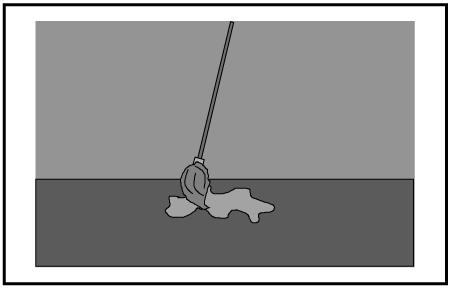
High Overlap: It is drying it / It got dried by it
Low Overlap: The mop dried the floor / The floor got dried by the mop
-
‘Push’
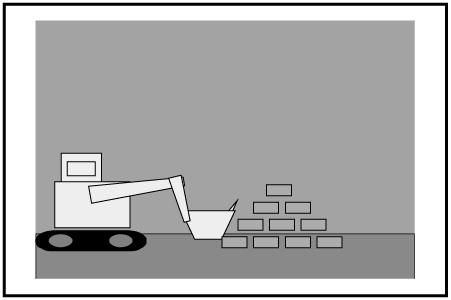
High Overlap: It is pushing it / It got pushed by it
Low Overlap: The digger pushed the bricks / The bricks got pushed by the digger
-
‘Shoot’
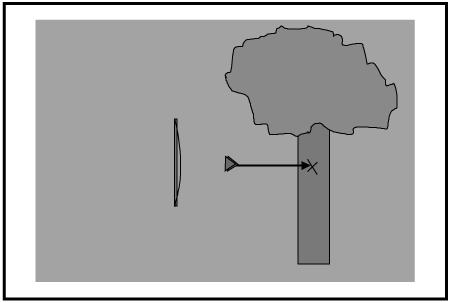
High Overlap: It is shooting it / It got shot by it
Low Overlap: The arrow shot the tree / The tree got shot by the arrow
-
‘Wrap’
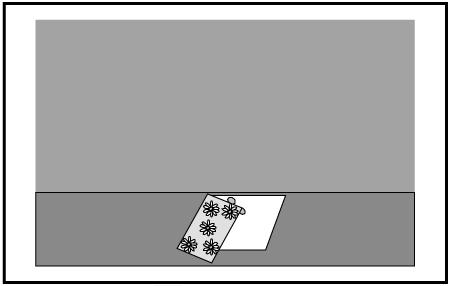
High Overlap: It is wrapping it / It got wrapped by it
Low Overlap: The paper wrapped the present / The present got wrapped by the paper
Target stimuli
-
‘Break’
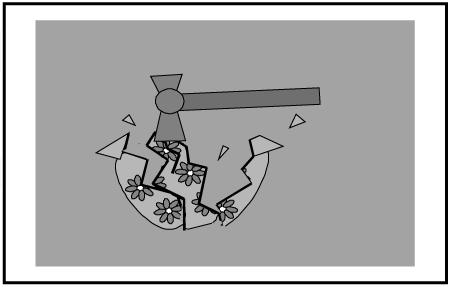
High Overlap: It is breaking it / It got broken by it
Low Overlap: The hammer broke the vase / The vase got broken by the hammer
-
‘Close’
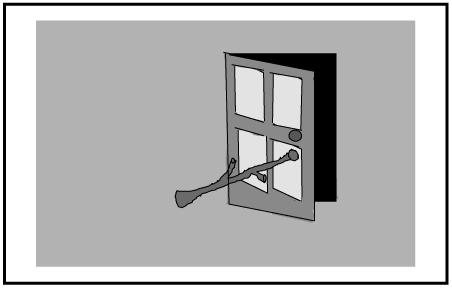
High Overlap: It is closing it / It got closed by it
Low Overlap: The stick closed the door / The door got closed by the stick
-
‘Colour’
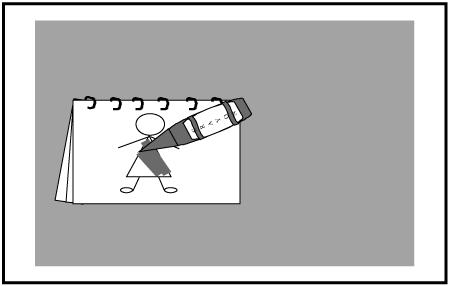
High Overlap: It is colouring it / It got coloured by it
Low Overlap: The crayon coloured the paper / The paper got coloured by the crayon
-
‘Cut’
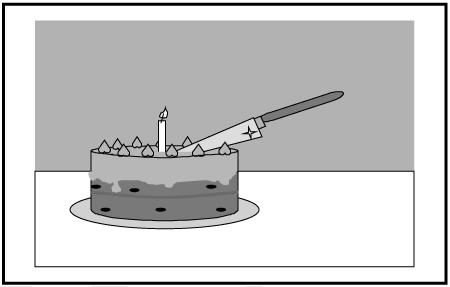
High Overlap: It is cutting it / It got cut by it
Low Overlap: The knife cut the cake / The cake got cut by the knife
-
‘Lock’
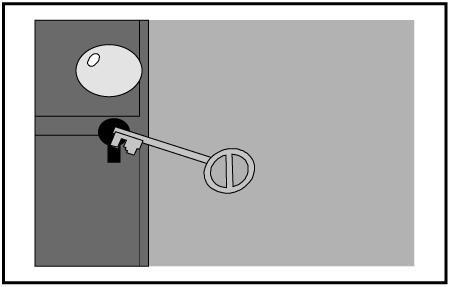
High Overlap: It is locking it / It got locked by it
Low Overlap: The key locked the door / The door got locked by the key
Footnotes
Our procedure differed from that typically used with adults in the following ways: (1) active priming and passive priming were tested for in different sessions; (2) there were no ‘fillers’ between stimuli; (3) children were given no ‘cover story’ about what they were doing (except ‘playing a game’); and (4) children heard each prime four times before the target was presented. These were all done to make the task more child friendly, and indeed the degree of priming in this study turned out to be, arguably, stronger than that in most adult studies.
References
- Abbot-Smith K, Lieven E, Tomasello M. What preschool children do and do not do with ungrammatical word orders. Cognitive Development. 2001;16:1–14. [Google Scholar]
- Akhtar N. Acquiring basic word order: evidence for data-driven learning of syntactic structure. Journal of Child Language. 1999;26:339–356. doi: 10.1017/s030500099900375x. [DOI] [PubMed] [Google Scholar]
- Akhtar N, Tomasello M. Young children’s productivity with word order and verb morpholgy. Developmental Psychology. 1997;33:952–965. doi: 10.1037//0012-1649.33.6.952. [DOI] [PubMed] [Google Scholar]
- Barlow M, Kemmer S, editors. Usage based models of language acquisition. Stanford: CSLI Publications; 2000. [Google Scholar]
- Barsalou L. Cognitive psychology. Hillsdale, NJ: Lawrence Erlbaum Associates; 1992. [Google Scholar]
- Bock K. Syntactic persistence in language production. Cognitive Psychology. 1986;18:355–387. [Google Scholar]
- Bock K. Structure in language: creating form in talk. American Psychologist. 1990;45(11):1221–1236. doi: 10.1037//0003-066x.45.11.1221. [DOI] [PubMed] [Google Scholar]
- Bock K, Griffin Z. The persistence of structural priming: transient activation or implicit learning? Journal of Experimental Psychology: General. 2000;129(2):177–192. doi: 10.1037//0096-3445.129.2.177. [DOI] [PubMed] [Google Scholar]
- Bock K, Loebell H. Framing sentences. Cognition. 1990;35:1–39. doi: 10.1016/0010-0277(90)90035-i. [DOI] [PubMed] [Google Scholar]
- Bowerman M. Starting to talk worse: clues to language acquisition from children’s late speech errors. In: Strauss S, editor. U-shaped behavioural growth. New York: Academic Press; 1982. pp. 101–145. [Google Scholar]
- Bowerman M. The ‘no negative evidence’ problem: how do children avoid constructing an overly general grammar? In: Hawkins J, editor. Explaining language universals. Oxford: Blackwell; 1988. pp. 73–101. [Google Scholar]
- Bybee J. Regular morphology and the lexicon. Language and Cognitive Processes. 1995;10:425–455. [Google Scholar]
- Chang F, Dell G, Bock K, Griffin Z. Structural priming as implicit learning: a comparison of models of sentence production. Journal of Psycholinguistic Research. 2000;29(2):217–229. doi: 10.1023/a:1005101313330. [DOI] [PubMed] [Google Scholar]
- Childers J, Tomasello M. The role of pronouns in young children’s acquisition of the English transitive construction. Developmental Psychology. 2001;37:739–748. doi: 10.1037//0012-1649.37.6.739. [DOI] [PubMed] [Google Scholar]
- Croft W. Radical construction grammar: Syntactic theory in typological perspective. Oxford: Oxford University Press; 2001. [Google Scholar]
- Dodson K, Tomasello M. Acquiring the transitive construction in English: the role of animacy and pronouns. Journal of Child Language. 1998;25:555–574. doi: 10.1017/s0305000998003535. [DOI] [PubMed] [Google Scholar]
- Elman J, Bates E, Johnson M, Karmiloff-Smith A, Parisi D, Plunkett K. Rethinking innateness - a connectionist perspective on development. Cambridge, MA: MIT Press; 1996. [Google Scholar]
- Fisher C. Structural limits on verb mapping: the role of analogy in children’s interpretations of sentences. Cognitive Psychology. 1996;31:41–81. doi: 10.1006/cogp.1996.0012. [DOI] [PubMed] [Google Scholar]
- Fisher C. Who’s blicking whom?: Word order in early verb learning. Poster presented at the 11th International Conference on Infant Studies; Brighton, England. 2000. [Google Scholar]
- Fisher C. Structural limits on verb mapping: the role of abstract structure in 2.5-year-olds’ interpretations of novel verbs. Developmental Science. 2002;5(1):55–64. [Google Scholar]
- Hartsuiker R, Kolk H. Syntactic persistence in Dutch. Language and Speech. 1998;41:143–184. doi: 10.1177/002383099804100202. [DOI] [PubMed] [Google Scholar]
- Hartsuiker R, Kolk H, Huiskamp P. Priming word order in sentence production. Quarterly Journal of Experimental Psychology. 1999;52A:129–147. [Google Scholar]
- Hood B, Carey S, Prasada S. Predicting the outcomes of physical events: two-year-olds fail to reveal knowledge of solidity and support. Child Development. 2001;71:1540–1554. doi: 10.1111/1467-8624.00247. [DOI] [PubMed] [Google Scholar]
- Israel M, Johnson C, Brooks P. From states to events: the acquisition of English passive participles. Cognitive Linguistics. 2000;11(1/2):1–27. [Google Scholar]
- Langacker R. Foundations of cognitive grammar, Volume 1. Stanford, CA: Stanford University Press; 1987. [Google Scholar]
- Lieven E, Pine J, Baldwin G. Lexically-based learning and early grammatical development. Journal of Child Language. 1997;24:187–220. doi: 10.1017/s0305000996002930. [DOI] [PubMed] [Google Scholar]
- Maratsos M, Gudeman R, Gerard-Ngo P, DeHart G. A study in novel word learning: the productivity of the causative. In: MacWhinney B, editor. Mechanisms of language acquisition. Hillsdale, NJ: Erlbaum; 1987. pp. 89–113. [Google Scholar]
- Munakata Y, McClelland JL, Johnson MH, Siegler RS. Rethinking infant knowledge: toward an adaptive process account of successes and failures in object permanence tasks. Psychological Review. 1997;104:686–713. doi: 10.1037/0033-295x.104.4.686. [DOI] [PubMed] [Google Scholar]
- Naigles L. Children use syntax to learn verb meanings. Journal of Child Language. 1990;17:357–374. doi: 10.1017/s0305000900013817. [DOI] [PubMed] [Google Scholar]
- Pickering M, Branigan H. The representation of verbs: evidence from syntactic priming in language production. Journal of Memory and Language. 1998;39:633–653. [Google Scholar]
- Pickering M, Branigan H, Cleland A. Syntactic coordination in dialogue. Cognition. 2000;75:13–25. doi: 10.1016/s0010-0277(99)00081-5. [DOI] [PubMed] [Google Scholar]
- Pickering M, Branigan H, Cleland A, Stewart A. Activation of syntactic information during language production. Journal of Psycholinguistic Research. 2000;29(2) doi: 10.1023/a:1005149129259. [DOI] [PubMed] [Google Scholar]
- Pinker S. Learnability and cognition. Cambridge, MA: MIT Press; 1989. [Google Scholar]
- Pinker S, Lebaux D, Frost L. Productivity and constraints in the acquisition of the passive. Cognition. 1987;26:195–267. doi: 10.1016/s0010-0277(87)80001-x. [DOI] [PubMed] [Google Scholar]
- Potter M, Lombardi L. Syntactic priming in immediate recall of sentences. Journal of Memory and Language. 1998;38:265–282. [Google Scholar]
- Roberts K. Comprehension and production of word order in Stage I. Child Development. 1983;54:443–449. [Google Scholar]
- Tomasello M. First verbs: A case study of early grammatical development. Cambridge: Cambridge University Press; 1992. [Google Scholar]
- Tomasello M. Do young children have adult syntactic competence? Cognition. 2000;74(3):209–253. doi: 10.1016/s0010-0277(99)00069-4. [DOI] [PubMed] [Google Scholar]
- Tomasello M, Akhtar N, Dodson K, Rekau L. Differential productivity in young children’s use of nounds and verbs. Journal of Child Language. 1997;24:373–387. doi: 10.1017/s0305000997003085. [DOI] [PubMed] [Google Scholar]
- Tomasello M, Brooks P. Young children’s earliest transitive and intransitive constructions. Cognitive Linguistics. 1998;9:379–395. [Google Scholar]




